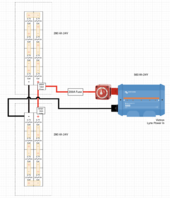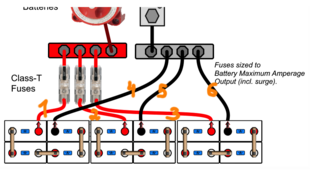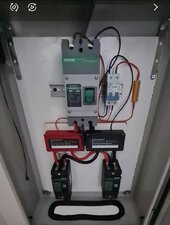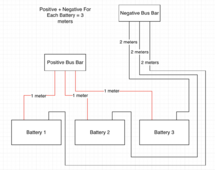Thanks for great info. Am I thinking correctly?
1. Wires 1, 2, 3 should be equal length; Wires 4, 5, 6 should be equal length;
2. Wires 1, 2, 3 AND 4, 5, 6 don't need to be equal length. For example wires 1, 2, 3 can be 1 meter, wires 4, 5, 6 can be 1.5 meters. I understand that wire 1 can't be 0.5 meter if wires 2, 3 are 1 meter.
As an additional real case scenario, there could be possibility that 1 meter could be enough for all positive wires, but let's say negative bus bar is a bit further away and you need at least 1.5 meters of wire to connect to it. Do I need 1.5 meters positive wire even though 1 meter would be enough, to maintain same length between positive and negative wires? Once again, I understand that lengths should be equal between all postive wires (same for negative wires)
View attachment 223301













